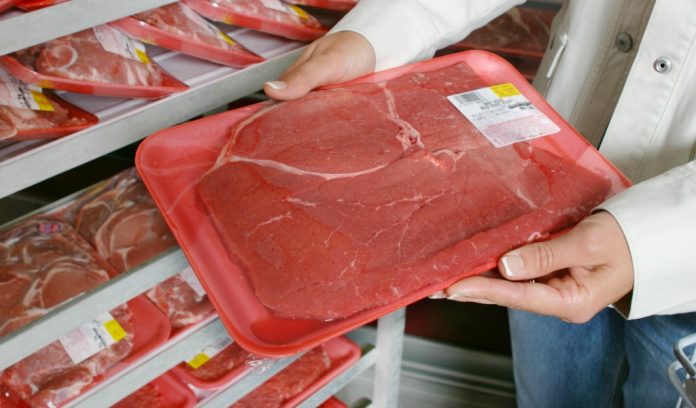Meat prices are up. And some grocery stores have limited how much meat you can buy. While shoppers might be paying more for meat, the prices livestock owners are earning for their pigs, chickens, cattle and other animals are down — that’s if they can even sell them.
Meatpacking plants have had to shut down fully or partially because of the number of employees sick with COVID-19 or concerned about catching the disease. As a result, farmers have had to keep their fully grown livestock on the farm, though they were ready to go to market.
In some cases, farmers in Ohio and nationwide have had to begin reducing their flocks or herds by euthanizing them.
Stan Smith, a livestock owner and program assistant for Ohio State University Extension, in Fairfield County, and Lyda G. Garcia, an assistant professor of meat science with the Ohio State University College of Food, Agricultural, and Environmental Sciences, described the current challenges in the livestock industry.
How has COVID-19 affected the supply of meat in grocery stores?
In mid-March, when Ohio’s schools closed, schools were no longer offering lunch to 1.7 million schoolchildren. Families suddenly needed to shop for food — including meat — to prepare at home.
The stay-at-home order resulted in restaurants closing or offering only drive-through service, and families were once again headed back to the grocery store to stock up as they prepared to create even more meals at home.
As Americans were suddenly no longer spending more than a third of their food budget on meals prepared away from home, the markets reacted with a short-lived spike in livestock prices, as supply scrambled to keep up with demand in local meat cases.
Now, meatpacking plants are operating below capacity or are temporarily closing down because of the effect of COVID-19 on the workers in those plants. While demands for meat remain strong, and livestock inventory is more than adequate, there is now a backlog of market-ready livestock at the farm.
So the prices farmers are getting for their livestock are dropping?
Yes. And that assumes that farmers can even find a processor to take their animals and process them.
Until meatpacking plants can return to full production, consumers will continue to see higher meat prices. This might seem to be a short-term problem that consumers can simply work around. Unfortunately, that’s not necessarily true for livestock owners.
Will there be a meat shortage?
No. There’s plenty of meat out there. We’re not going to run out. The closing or partial shutdown of meatpacking plants has slowed the processing of meat.
Buying local meat helps Ohio farmers stay in business. The state has approximately 400 local processors where you can purchase meat directly.
Why have some farmers had to euthanize animals?
With meatpacking plants closed or partially closed, farmers can’t have their livestock processed, so market-ready animals are being held at the farm longer.
Ohio meat processors are running at full capacity and are booked six to 12 months out. So, there’s no room to add more animals to the list.
Some animals, such as cattle, can stay a bit longer on the farm and can still maintain most of their value when the farmer sells them. If farmers can’t find a buyer for their chickens or pigs, the farmers might sometimes decide to euthanize the animals to cut their losses.
Farmers can’t send the animals to a food bank or to families, because a meat processor must first be open and willing to process the meat according to federal regulations and apply the proper labels.
How are consumers reacting?
I’m hearing a lot about folks going to local meat processors and buying half a cow or a pig or a lamb, cut up and packaged, so that they can fill their freezer and be well stocked with meat.
Suddenly, the demand for that is way up.
What’s in store for the future?
Until COVID-19 subsides and enough healthy workers are available, we will continue to deal with challenges.
Consumers might experience temporary meat-case shortages, while livestock producers will face marketing challenges and depressed prices for their livestock, and will need to remain flexible in their livestock feeding and marketing plans moving forward.










